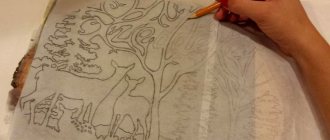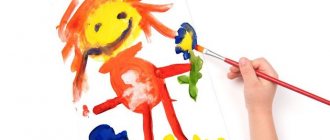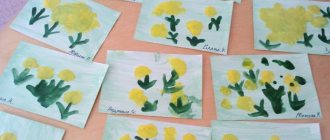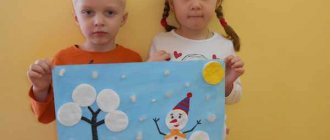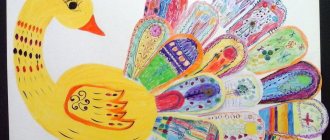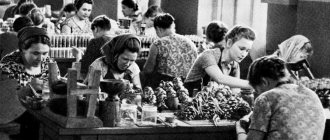The art of the people and their creativity invariably reflect their identity and spiritual wealth. One such widely known Russian folk craft is Gzhel. The unsurpassed art of filigree painting on clay products and the peculiarities of the design allow us to confidently call Gzhel the heritage of Russia. This folk craft with a long history is still very popular today. Gzhel not only pleases the eye with its unique and intricate ornamentation, but also immerses you in a mysterious and intriguing fairy-tale world.
History of Gzhel and its origins
The name of this folk craft is associated with the village of Gzhel, located in the Moscow region. This place is very picturesque, but not fertile. For a long time, the residents of this village tried to engage in agriculture. However, their time was wasted. All the failures were associated with a huge layer of white clay that lay almost on the surface. After it became known about the high quality of this clay and the fact that it makes excellent porcelain, a folk craft associated with the production of various pottery products was born. Local craftsmen created not only dishes, but also children's toys. The first pottery products of this area have been known since 1320.
Gradually, the original drawing, unique painting and amazing originality of Gzhel became very popular, and individual workshops merged into large productions.
There is an opinion that at first this folk craft was called “zhgel”, and then for ease of pronunciation they switched to the word “Gzhel”. The very name of the village meant “burn.”
GCD in the senior group “Acquaintance with the history of Gzhel painting. Painting a teapot"
Galina Mutina
GCD in the senior group “Acquaintance with the history of Gzhel painting. Painting a teapot"
Direct educational activities in the senior group.
Topic: “ Introduction to the history of Gzhel painting . Painting a teapot ."
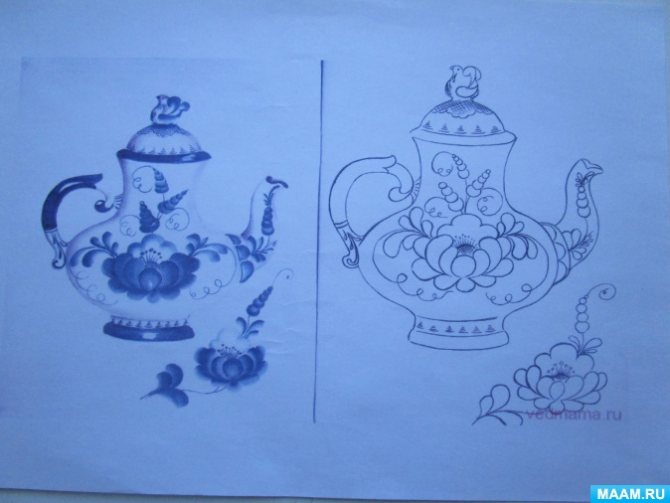
Goal: To develop an aesthetic perception of folk crafts, to teach them to see their beauty; teach children to paint a teapot based on Gzhel painting .
— introduce Gzhel painting in blue tones;
— consolidate the ability to paint with watercolors, learn to paint with the end of a brush;
- teach the technique of blurring colors;
- cultivate interest in folk decorative art; evoke a positive emotional response to beauty.
Materials: presentation “Blue Fairy Tale”
, background music
“Gusli”
, visual material, products of
Gzhel masters , drawing sheets with the image of a teapot and the outline of Gzhel patterns , watercolors, brushes, cups of water, napkins.
Features of the Gzhel fishery
The difference between Gzhel and other folk crafts, which allows us to confidently call it a unique, distinctive, inimitable and original part of Russian artistic creativity, is the unusualness of the painting and, of course, handmade work. The main feature of Gzhel is a pattern in blue tones on a snow-white background and a pattern representing a complex floral pattern. Thanks to the contrast of cobalt paint and a white background, a unique brightness of color is created, which invariably attracts the eye and makes you admire the master’s work again and again.
In addition, the design is applied under the glaze and only then the product is fired. Cobalt is one of the few paints that can withstand oven temperatures of 1300 degrees.
What do you need to create patterns on paper?
Gzhel painting features, types, colors and elements
When working with children, in the vast majority of cases, traditional tools for creating Gzhel painting (cobalt oxide, spatulas, reagents, and so on) are not used for safety reasons. Young artists learn to draw patterns in this style on paper.
For a comfortable working process, the child must be equipped with:
- thick sheets of paper or white cardboard. Thin pages are deformed under the influence of water and paint, causing the appearance of the entire work to become significantly worse;
- blue and white paints. It is not recommended to give your child more flowers in order to better form his understanding of Gzhel painting. Gouache, oil paints or rich watercolors are suitable for work;
- brushes (it is recommended to provide the child with 2-3 types of brushes, varying in thickness);
- palette (the young artist will need it when mixing colors to obtain the required shade of blue);
- container with water;
- a piece of fabric made from natural materials (you can not only wipe your hands with it if the need arises, but also correct the image recently applied to the working plane);
- stencils (especially important if a young child who does not have fine art skills is learning to paint).
Variety of Gzhel shapes

Gzhel products are distinguished not only by a huge variety of designs and original ornaments, but also by a wide selection of shapes.
The world of Gzhel is represented by such objects as:
• Tea pairs • Sets • Flower vases • Teapots • Sugar bowls • Jam sockets • Samovars • Souvenirs
A wonderful and unusual gift in addition to the above are: damask, plaque, kumgan.
Shtof is a tetrahedral-shaped vessel with a short neck and a stopper. In the old days it was used to store strong alcoholic beverages. The plaque, made using the Gzhel technique, is a painted decorative plate and serves as an excellent interior decoration. Kumgan is a vessel with a narrow neck, thin spout, handle and lid. Previously, it was used to wash hands and feet, and now, thanks to the masters of Gzhel, it is a wonderful and memorable gift.
Gzhel is also represented by a rich variety of souvenirs. Among them are figurines of animals, heroes of folk tales, snowmen, fish, nesting dolls, etc. Some of the products are dedicated to representatives of various professions, made in the form of the first leaf of a calendar, or have the shape of a bell.
Method of manufacturing Gzhel handicrafts
Creating products for Gzhel requires from the master extraordinary precision, painstakingness and an incredible flight of imagination. The dishes can be made of porcelain or majolica. The difference is that porcelain is white clay. It is more fragile and thin. Majolica is made from red clay and is more durable.
The entire manufacturing process can be divided into five stages. These include:
• Creation of a blank • Preparation for painting and first firing • Control and rejection of products • Painting • Second firing
The preparation process involves creating a porcelain or majolica mold from clay according to the artist’s sketches. This preparation is made on a pottery wheel, but not with your hands, but with special tongs. After the plaster mold is ready, liquid porcelain mass is poured into it, which gradually hardens. Gypsum absorbs moisture well, so porcelain hardens quickly.
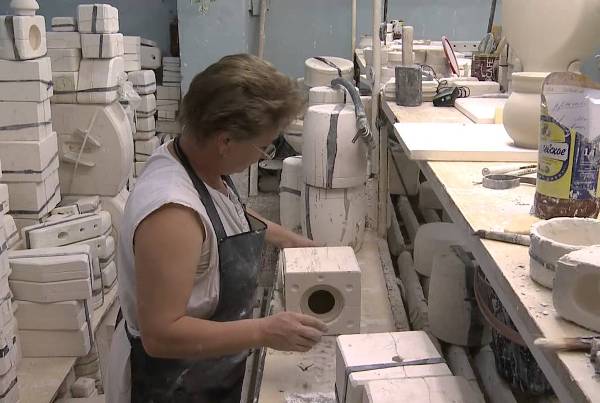
An important feature of creating Gzhel is that all elements of the dishes, from handles to relief patterns, are made in different forms. This requires special care and attention from the master.
The next stage is preparation for painting. It includes polishing the product and firing it.
In order for the design to lie smoothly and neatly, each product is first cleaned with a special knife and polished. This process is carried out manually. Then the attachment points of various parts of the product are washed away, and the remaining irregularities are smoothed out using a foam roller. After this, the product is sent to the kiln for firing, which lasts about eight hours.
After firing, it is necessary to monitor the quality of the product and the presence of defects in it. They are identified using a fuchsin solution. This substance accumulates in the uneven surfaces of porcelain and turns bright red. Thus, unevenness or poor-quality joints in the product become visible. Next, imperfections are removed by roller sanding or washing. If the defect cannot be eliminated, the product is sent to scrap and melted down.
After this, painting begins. Each master has his own unique method of applying patterns and signs his work at the end. Then, the supporting parts of the product are treated with paraffin. To do this, the master manually dips the dishes into a bath of hot paraffin. Then, the product is dipped in glaze and sent for a second firing. It lasts quite a long time, eighteen hours. It is thanks to underglaze painting that the color saturation remains the same for a long time. Such products can be washed not only by hand, but also in the dishwasher.
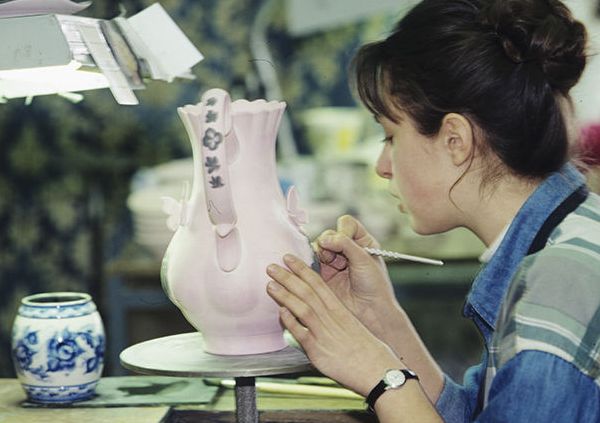
Thus, each stage of the work is performed manually. Such work is very painstaking, therefore, mostly women work in Gzhel factories.
After firing, the product takes on its final form and is subject to subsequent packaging.
Progress of the lesson:
The land of the porcelain miracle,
And all around him are forests...
Blue-eyed dishes -
Vases, teapots and dishes
It shines brightly from there,
Like native heavens!
It is with this beautiful, gentle poem that I want to start our lesson.
So. In a certain kingdom, in the Russian state, not far from Moscow, among forests and fields stands the town of Gzhel.
Once upon a time - long ago - there lived brave and skillful, cheerful and beautiful craftsmen. They got together one day and began to think about how best they could show their skills, please all the people and glorify their land. They thought and thought and came up with something. They found wonderful clay in their native side, white - white, and decided to sculpt from it
different dishes, and such as the world has never seen. Each master began to show his ability. He made one teapot, another master looked and did not make a teapot, but made a jug, and the third a dish. Each master began to sculpt his own dishes, and there was not a single product similar to another. But Gzhel craftsmen decorated their products not only with stucco molding; they painted dishes with blue paint of different shades. They painted various patterns of nets, stripes, and flowers on the dishes. The painting was very intricate and elegant. People fell in love with the beautiful dishes and began to call them “pale blue miracles”
. The masters glorified their beloved land throughout the world; they told everyone what skilled craftsmen live in Rus'.
Today we will visit the exhibition of Gzhel ceramics.
Look and tell me, please, what objects were painted by the Gzhel masters? What elements of painting did they use to decorate their products? (flowers, grass, leaves, curls, branches)
. What primary colors do craftsmen use in their products?
And now I want to invite you to become Gzhel masters.
Let's all sit down at our tables. And we will paint the jug. Look how I painted the jug. What elements are used in painting the teapot? And now I will show you in what order to draw these elements. Let's start drawing with a trefoil flower. We paint the petal along the edge from left to right with continuous lines without gaps. We work with blue paint. Now let the flower dry, and with the end of the brush we will draw a branch, grass, curls along the upper and lower edges. You know this, and I won’t show it. We work with such paints like real masters. To do this, take the end of the brush with dark blue paint and draw a thin line along the edge of the flower.
Children's independent work is performed to the sound of Russian instruments.
The teacher conducts individual work. At the end of the work, the children organize an exhibition of their works and analyze them.
These are the jugs the children made.
Features of Gzhel painting
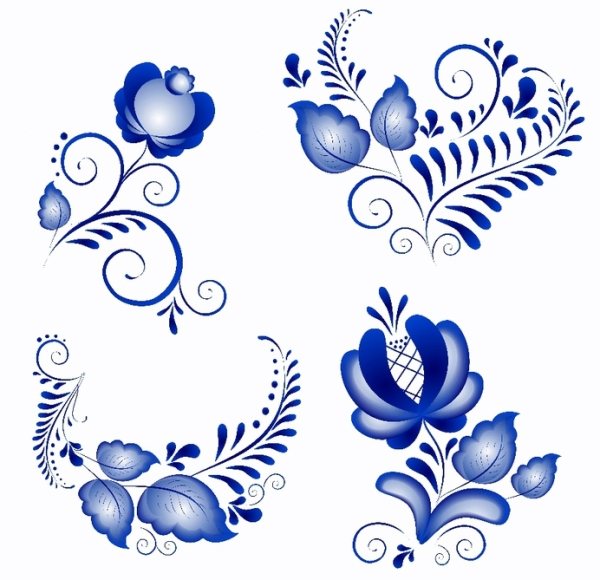
The uniqueness, grace and incredible beauty of Gzhel products are given by the peculiarities of their painting. These include:
• Snow-white background • Deep blue pattern • Surface glazing • Diverse and complex floral patterns • Handmade
The use of only two colors and the uniqueness of the images make it possible to create unique masterpieces of folk art, therefore, there are no two identical products from Gzhel.
The pattern of the future product is first carefully thought out, and only after that is applied to the porcelain surface. Ancient masters applied the drawing immediately, without a preliminary sketch. They drew their inspiration from nature or from pictures of folk life. Painting is done with a solution of cobalt oxide, which after firing acquires a deep blue color. It is applied with special squirrel brushes.
There is another type of painting in the Gzhel style, which is called majolica. Its peculiarity is that not one color, but five, is applied to the snow-white surface.
Many centuries ago, Gzhel masters tried to reflect in their art their vision of the world around them, pictures of urban and rural life, inexplicable natural phenomena, their thoughts and fantasies. Based on this, the general style of painting can be divided into three main groups:
• Ornamental • Floral • Subject
The ornamental pattern is original, unusual and a certain association can be traced in it. The most common ornamental patterns are: drops, tendrils, blades of grass, pearls, combs. In addition, a checkered pattern is traditionally applied along the side and border, which is a chain of blue squares.
The plant pattern is considered classic for Gzhel. It is usually quite stylized, but you can always distinguish one plant from another. Most often, craftsmen depict berries, blades of grass, cuttings, and flowers on Gzhel products. Garlands of berries on porcelain can easily be intertwined with ears of wheat or a riot of floral patterns. At the same time, gooseberries can be easily distinguished from currants.
Often ornamental painting is combined with a floral pattern.
The plot drawing was one of the first to appear. It presented pictures from the life that surrounded the master. It could be beautiful landscapes, fun fairs, sleigh rides, colorful natural phenomena.
Gzhel patterns
In past times, Gzhel potters gave preference to the surrounding world in painting, combining nature, city and village life, architecture and iconography in their drawings, and the finishing touch was their own imagination. Today, the theme of Gzhel drawing can be divided into three types: plant (image of cereals, berries, twigs and blades of grass, flowers), plot (nature and seasons) and ornamental (the main preference is given to “checkered” patterns - rows of blue and white squares in side). Gzhel painting technology allows you to create unique and amazing things.
Modern masters of Gzhel
Thanks to the creative heritage left by the ancient masters of Gzhel, their modern followers were able not only to revive this great folk craft, but also to introduce into it notes of modern art, features of life and the originality of the views of the present time. At the end of the 19th century, modern Gzhel began to gain popularity, however, they painted mostly simple figures and the design was not as intricate as that of the ancient masters. Gradually, porcelain sculpture and decorative vases began to be mastered, and new original types were added to the traditional Gzhel pattern.
Thus, thanks to modern masters, there was a revival of Gzhel, it acquired new interesting techniques, exciting plots and a special style. Now these products are widely in demand all over the world and are an integral part of Russian folk art.
Gzhel was and remains an unsurpassed symbol of the enormous creative imagination and highest skill of the Russian people. This craft is a kind of history book, which carefully preserves the imprint of the time in which it was created, immerses us in a world full of incredible miracles and unique colors, and tells about how our ancestors lived. However, the popularity of Gzhel lies in the fact that it is capable of displaying pictures of modern times, helping people to look at themselves from the outside, to see how beautiful and amazing the world around them is.
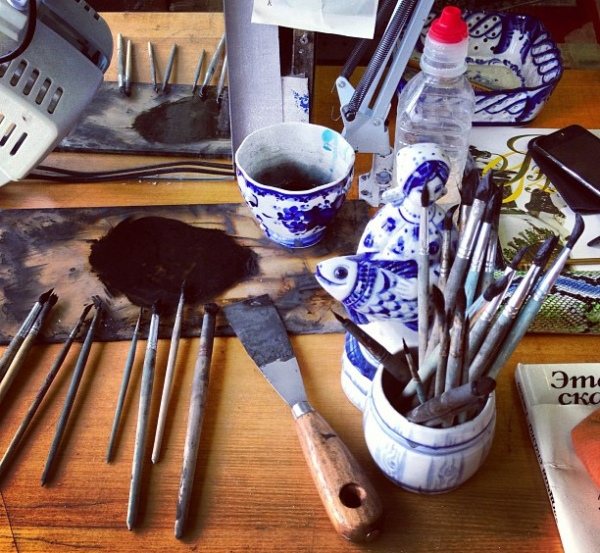
Popular message topics
- The water cycle in nature A lot of time has passed since the planet on which we live was formed. But the total number of waters on it, one might say, remained unchanged. But since water is constantly moving on the earth's surface
- Predators and their prey Animals and birds that feed on the meat of other animals or their own kind are called predators or carnivores. Currently, this category is conventionally divided into two main species - land animals and pinnipeds. There are about 300 species worldwide
- Aphrodite Aphrodite is known to us from ancient Greek myths and legends. She is one of the great goddesses of Olympus. She is the daughter of Zeus and Dione, according to legend, born from sea foam.
Gzhel painting: features, types of Gzhel painting, colors and elements
